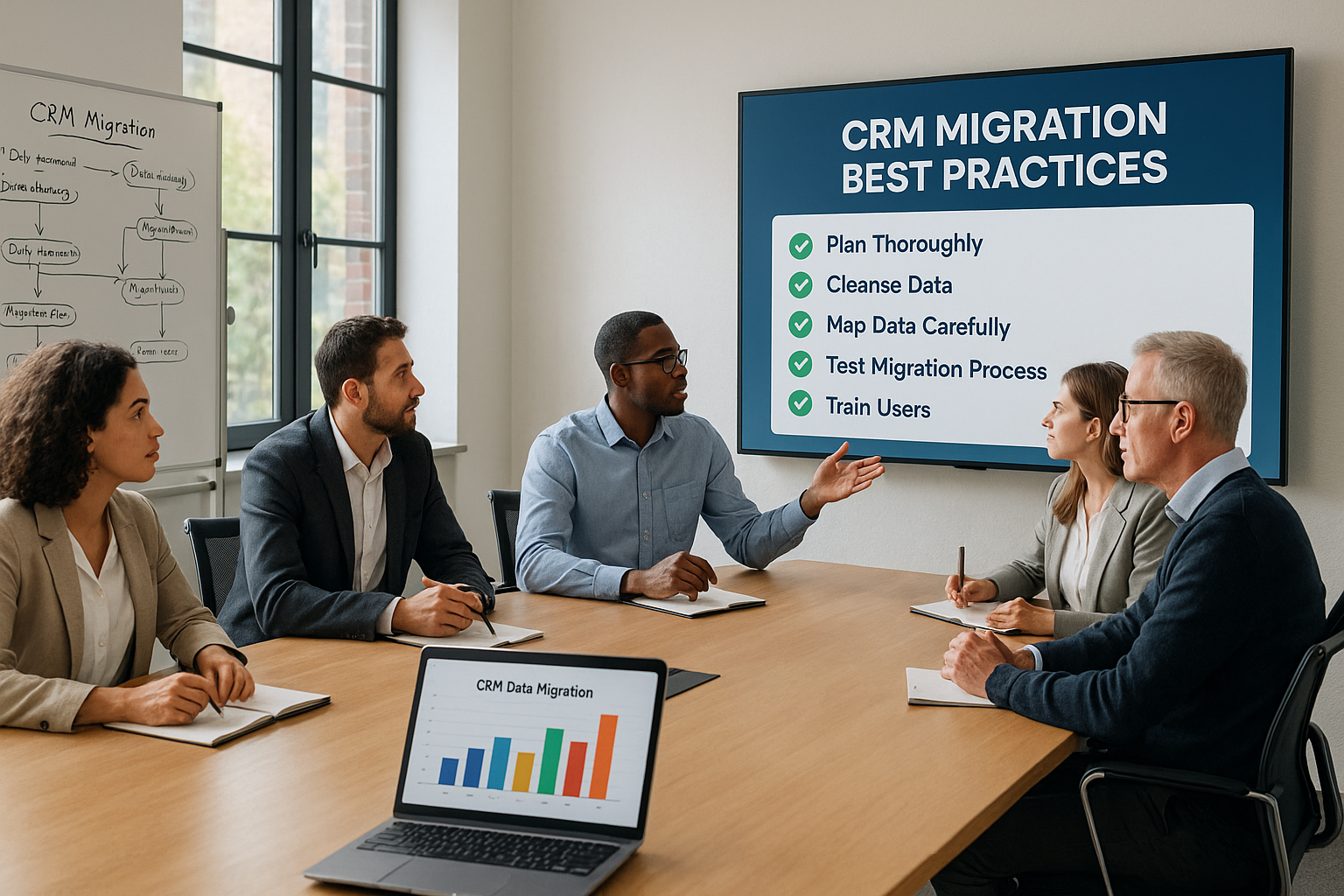Without failure, we wouldn’t evolve. Without mistakes, we wouldn’t make better decisions. Without practice, we wouldn’t grow.
Studies over the last two years over various methodologies and terminologies used in the analysis of CRM adoption have dramatically different outcomes. Various researchers put the CRM failure rate between 18% and 69%. If we estimate the total result from these CRM project studies, we end up with a failure adoption rate of approximately 30%.
Let’s discover why CRM fails. Why is the failure rate to implement and adopt CRM so high?
Reasons CRM Fails
Successful implementation of CRM begins with clearly specified goals. It is difficult to achieve goals that have not been explicitly set. A lack of simple and measurable goals leads to an aimless mission, uncertain completion, incalculable ROI, and CRM fails. At best, they are piecemeal skills which rarely roll up to significant market effects, and usually are representatives of an "IT run project."
Albeit a logical conclusion, there is no law that specifies that sales enhancements must be included in CRM goals. However, by definition, ROI cannot be calculated if it can't accurately assess sales profits.
Likewise, there is no rule that makes user targets be included in CRM objectives. Simply installing and configuring an application software without providing a user experience that makes life easier, more productive, and more rewarding for its users, is much like saying the operation was successful but the patient has died.
2. Poor CRM strategy
A systematic approach is an integral part of any effective application of CRM. It seems logical to have a well-designed strategy, but lack of preparation is frequently cited as one of the key reasons CRM fails.
To start strategizing, track a lead as it moves from contact to MQL to customer. Define stakeholders by mapping every stage of your customer process to its owner.
Bear in mind that CRM is not a software application. It's a marketing practice that seeks to establish mutually satisfying and successful customer ties. A business plan is driven by technology, enabling what we call CRM software.
You can still incorporate CRM software without an accompanying plan, but here’s what usually happens: the outcomes fall far from strategic objectives to tactical goals. Examples include entering data into a system, tracking staff activities, or generating a pipeline report, all of which are legitimate pieces of strategy that do little or nothing to strengthen customer relationships.
Scope creep occurs when a client adds new provisions, tasks, or deliverables to a project that is outside of an existing scope of work. These unforeseen changes can lead to missed deadlines, financial losses, increased timelines and budgets, and client dissatisfaction, as defined by MBO Partners.
Scope creep needs to be handled actively in a controlled and thorough manner. An interesting fact about scope is that if the project entails significant time and cost overruns, it will not be because certain items of scope have been undervalued. It will be because the planning and estimating process totally missed certain scope items.
Each CRM implementation approach has its own scope triggers, metrics, or measurements. Most of them handle scope by micro-managing individual scope areas like application delivery, data migration, system integration, software customization, training, change management, and the four key elements of scope: time, cost, and quality project management
In most CRM implementations, resistance to change is a given. A new CRM system brings a lot of change and new processes, automation, information, roles, and responsibilities. The issue with change is that it causes users discomfort and, although it is supported by the few who implemented the change, the rest who receive the change is still not so widely accepted or even challenged.
To fill this void, user adoption systemically moves people, communities, and organizations from a current state to a desired future state. At the same time, it reduces productivity loss during the transition, allowing for 0% downtime, provides an atmosphere for sustainable change, and fosters an understanding of its benefits.
A few user adoption tasks used in implementations of CRM software include:
- Change readiness evaluations
- Communication plans
- Business and technology impact analysis
- Learning and training tools
Such measures fuel confidence in the opposers to change and will not hinder or disrupt project goals.
Lack of planning is another reason CRM fails. Agile and Scrum have replaced waterfall delivery approaches and, for good reasons, have become the de facto CRM development approach – speeding time to value, delivering streamlined execution that produces consistent outcomes, and reducing project risk. They also help project teams distinguish the urgent from the relevant, and avoid confusing progress with activity.
Many organizations are conducting Scrum improperly. Instead, they use parts based largely on convenience, ignore some of the more challenging rules, and then wonder why things weren't working out. Scrum's functions, objects, incidents, and laws are timeless.
Though the software is essential to make CRM work, it is not a technology for customer data organization. Customer relationship management is an ongoing process to keep an organization focused on its clients and their mutual, beneficial needs.
Approaching CRM as a software solution is one of the most common reasons CRM fails. So many adopters get the program built from their IT department, have it up and running, and then wonder why the competitive benefits are not understood.
CRM needs to be a company-wide initiative that begins with customer approaches that are then automated with applications. You can not simply focus on the software and ignore the rest.
Successful CRM implementation involves, among other things, improving or possibly re-engineering customer-centered business operations that are then integrated with the enterprise software to make them efficient, consistent, and timely. Consumer approaches and changes in business processes include a willingness to alter every aspect of how the organization responds to its clients.
Training is key to the success of every plan to incorporate CRM. Forcing a new method or software program on your team and then expecting them to be successful without proper training is impractical.
Find out how much training your software provider has available and how it’s delivered. Make sure your users get enough strain before and after the implementation to get the most out of your investment.
All providers of CRM software say that their program is a snap to install and extremely easy to use. Nonetheless, you can not just set up the software and expect to sit back and watch your profits skyrocket.
You need to ask yourself the following questions:
- Is support available 24/7 or for certain hours only?
- How is support delivered?
- How hard or expensive is it to talk to a live person?
Know what kind of resources are there to support you before you need them. Find a vendor whose offers of support suit your needs.
You don’t need to change your business processes to suit your software, and that's just what some CRM vendors push you to do. You have to use their sales process pre-configured, their terminology, and their data format. You risk having to pay hundreds or even thousands to configure the program properly.
You can avoid choosing the wrong CRM by identifying your needs before you invest in a new provider.
This requires a strategy to determine which vendor best suits your business. Picking the least expensive or most popular software won't get you where you want to go. Realize what you need, know what is offered by every vendor, and try a demo before making a decision. Finally, make sure that the most critical features you need are included in the new CRM and the wrong vendor won't be the next reason CRM fails.
The Final Thoughts
By knowing the top reasons CRM fails, you’ll know exactly what to do when it’s time to implement. If you’re looking to deploy a new CRM, take all these factors into account. You can use data migration experts to move your data safely and swiftly.
Regardless of how you decide to implement a CRM solution, remember these top causes of low adoption rates. Be the company that knows no boundaries because you are knowledgeable of all the barriers.




